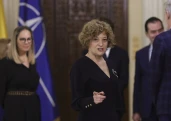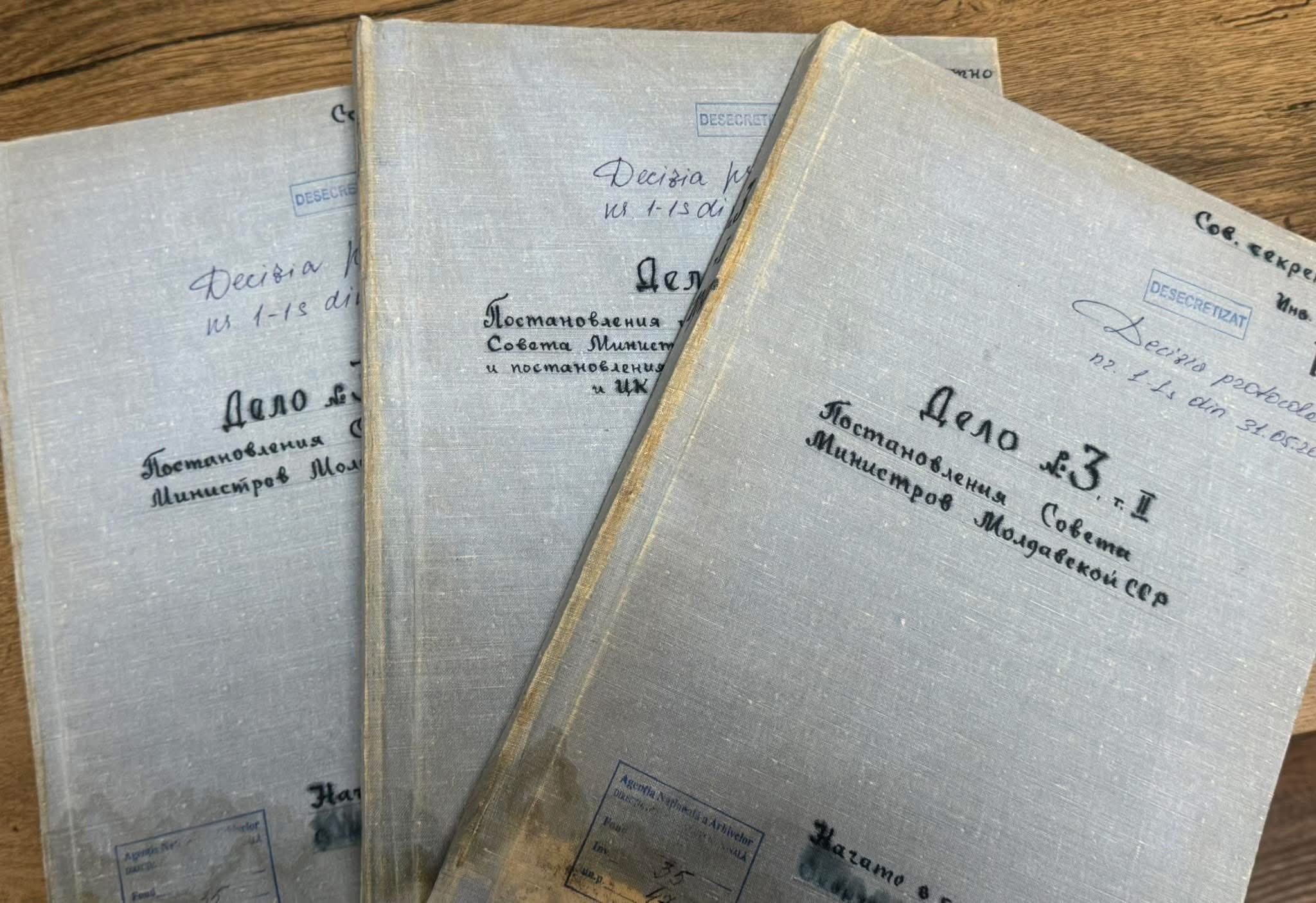The traditional Romanian blouse known as ie [ia when the definite article is added] is an identity card to Romanians, both at regional and national level that in recent years has returned with increased popularity among young people, Minister of Culture Bogdan Gheorghiu said on Wednesday evening.
On June 24, the Universal Day of the Romanian Blouse, he participated at the National Library of Romania in the opening of an exhibition called entitled "The written and rewritten story of ia."
"This blouse from the Romanian folk costume contributes to maintaining the feeling of belonging for Romanians everywhere, and also to increasing pride in the country. In times of trials, it was a symbol of closeness and human creativity. (...) Out of respect for the work and the creation of our ancestors, the tradition and the folklore must remain alive, must be passed on," said Gheorghiu.
In his speech, the minister praised cultural groups, which, in the form of small creative workshops, keep alive the tradition of the sewing bees and create genuine testimonies through the traditional blouses.
"But the beauty of these elements of intangible heritage is intertwined with the diligence and dedication of the women who gave birth to a great part of our national identity. That is why I believe this day has to be devoted to the makers of this national standard. Yet, we should not neglect the holiday that contributed to today's tradition - Sanzienele or Dragaica - the Midsummer, an agrarian holiday considered sacred in Romanian culture. To Romanians, this day has always been a perfect opportunity to celebrate the sun and summer agricultural work," said the culture minister.
The exhibition of the traditional dress of the Romanians, photographs, book illustrations and vintage engravings opened for the Midsummer holiday.
"If we celebrate them [fairies] properly, they bring health and abundance. In order to please the fairies, and also to delight the public, (...) I have prepared the exhibition together with Mrs Iulia Gorneanu (...) If you look closer and patiently at these wonderful traditional blouses you will see a wealth of symbols sewn in a universal language that unites the communities of our country. Visiting Wallachia, a series of foreign travellers, writers and Western artists of the 18th and the 19th centuries noticed over time the picturesque traditional costume from different historical regions, which they then painted in writings and images," said Carmen Mihaiu, director of the National Library of Romania.
The exhibition brings together pieces from the impressive collection of Iulia Gorneanu and documents from the special collections of the National Library of Romania. Iulia Gorneanu has rediscovered a deep part of the Romanian soul, mysteriously hidden in the beautiful Romanian blouses, in a sacred language that we are invited to decipher. She tries to prove that genuine items of the traditional costume can be integrated even today in urban outfits, like the Romanian ladies who proudly wore the folk costume in the 19th century.
"What I'm trying to do is inspire, that's why I exhibit parts of my collection," Iulia Gorneanu said at the opening of the event.
In her opinion, ia should be a source of inspiration for contemporary designers.
"It is mandatory for it to be a source of inspiration for the contemporary designers, to see these signs on the current clothing of the urban man, to enjoy our heritage, to exhibit from time to time, and that should become a source of inspiration," said Gorneanu.
According to her, the blouses tell about destinies. "There are lives told on these pieces of canvas, there are destinies told. The blouse was a kind of Facebook a century ago. By wearing a blouse and entering the church, a woman would tell everything about her: if she was married, if she was a widow, if she was a widow who wanted to remarry or wanted to keep her status, if she was preparing for death, the blouses of women on the death's bed had certain symbolic signs. Many of the blouses are underground because they left with their wearers. Let us rejoice in what we have, let us be inspired, let us do, at our level, what Brancusi tried to do and succeeded with great, great grandeur and take the story forward, as much as everyone can," said Gorneanu.
Attending the opening of the event, Director General of the AGERPRES National News Agency Claudia Nicolae showed that every year on June 24 AGERPRES also marks the Universal Day of the Romanian Blouse in a series of unique stories.
"We have started with talking about the ie as a tradition, as a history in some years; we have promoted it as an ambassador of Romania and we talked about Romanians who went abroad taking with them the inheritance they received from their parents or grandparents. ( ...) This year's special editorial project was called 'Tales of ia.' Why tales? Because amidst the isolation we all had to take, when we all had to stay at home without socialising with friends and acquaintances, maybe we went back a little to our roots, to origins, maybe we had more time to think about tradition, about family, about what we get as heritage," said Nicolae.
In her opinion, ia is a treasure that Romanians have to preserve.
"At Sannicolau Mare there is a legend, perhaps the most beautiful story of the Romanian blouse in the region of Banat. In the plain areas of Banat, in times of exile, women would bury their dowry chests. When they returned, they would dig them up. To them, they were the treasure of their family. Maybe this is or should be to us - a treasure that we have to preserve, pass on to the future and remember every time what our roots are, what our origins are, and mostly what our value is," said Claudia Nicolae.
National Library of Romania hosts exhibition of traditional Romanian blouses
Articole Similare

19
EnergyMin Ivan discusses with US officials about nuclear energy, hydropower, natural gas and technology
19

20
Deputy PM Gheorghiu: Romania can no longer afford to have special pensioners
20

19
Deputy PM Gheorghiu: Under no circumstances can I be called anti-American
19

10
ONRC: 110,894 natural and legal persons registered in the first nine months of 2025, up 23.15%
10

16
OMATOM at WNE 2025: Strategic partnerships, declaration to triple nuclear capacity and institutional-commercial dialogue
16

28
EnvironMin Buzoianu says EU agrees to postpone by one year implementation of ETS2
28

15
FinMin Nazare agrees with Greek counterpart to strengthen economic cooperation between Romania and Greece
15

16
Romania's Carmen Herea qualifies for semifinals at WTA 125 in Austin, Texas
16

25
Ice hockey: Romania, defeated by Ukraine 4-1 in Group D of European Nations Cup
25

16
Europe's next chapter: EU enlargement report hails progress, urges deeper reforms (enr)
16

18
Pislaru: Ministerial meeting on cohesion policy to take place in November
18

15
PSD Congress/Grindeanu says he embraces responsibility for the party's origins
15

24
Moody's Ratings upgrades Banca Transilvania's issuer and deposit ratings
24




















Comentează